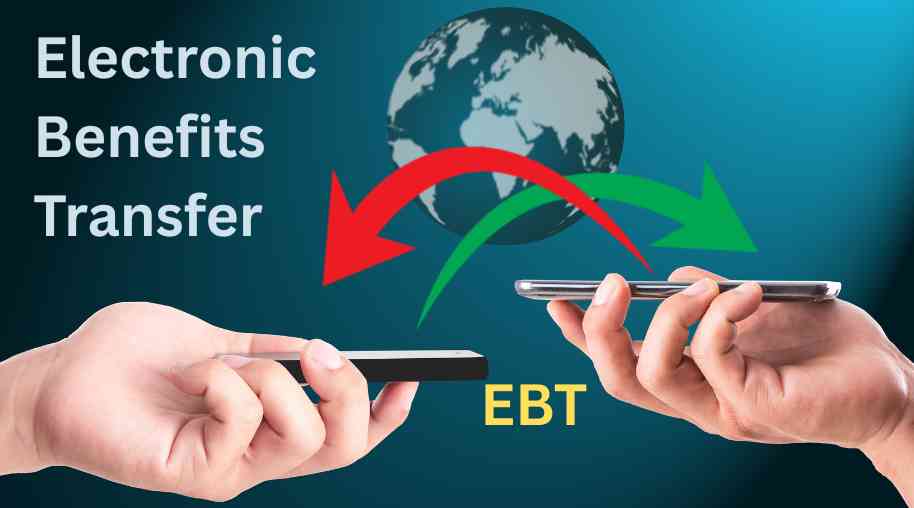EBT Full Form-Electronic Benefits Transfer
by Shashi Gaherwar
0 2115
Electronic Benefits Transfer (EBT): How It Works, Benefits, and Challenges
Introduction
Electronic Benefits Transfer (EBT) is a government-administered digital payment system that provides financial assistance to low-income individuals and families. It replaces traditional paper-based food stamps and welfare checks, ensuring a secure and efficient way to distribute benefits. EBT is widely used in programs such as the Supplemental Nutrition Assistance Program (SNAP) and Temporary Assistance for Needy Families (TANF), helping millions access essential resources.

This article explores how EBT works, its benefits, the challenges associated with its implementation, and its impact on financial inclusion.
How Does Electronic Benefits Transfer (EBT) Work?
EBT functions like a debit card system, where government benefits are loaded onto a recipient’s account, allowing purchases at authorized retailers. The process includes:
- Eligibility and Enrollment
- Individuals apply for programs like SNAP or TANF.
- Eligible recipients receive an EBT card linked to their benefits account.
- Distribution of Benefits
- Benefits are deposited electronically into the EBT account each month.
- Funds are used for approved purchases based on program guidelines.
- Usage at Retail Locations
- Recipients use EBT cards at participating grocery stores, farmers’ markets, and retailers.
- A Personal Identification Number (PIN) ensures secure access to benefits.
- Transaction Processing
- The card is swiped at a Point-of-Sale (POS) terminal.
- The system verifies the balance and deducts the purchase amount.
- Approved transactions transfer funds to the retailer.
Programs That Use EBT
EBT supports multiple government assistance programs, including:
- Supplemental Nutrition Assistance Program (SNAP)
- Provides funds for groceries, excluding alcohol, tobacco, and non-food items.
- Temporary Assistance for Needy Families (TANF)
- Offers cash assistance for essential needs, withdrawable from ATMs or used for eligible purchases.
- Women, Infants, and Children (WIC) Program
- Supports nutritional needs of pregnant women, new mothers, and young children with specific foods.
- School Meal Programs
- Some states allow EBT for free or reduced-price school meals.
Benefits of Electronic Benefits Transfer (EBT)
- Convenience and Efficiency
- Reduces paperwork and administrative costs compared to vouchers.
- Instant access to benefits without waiting for checks.
- Security and Fraud Prevention
- PIN-protected transactions minimize theft and misuse.
- Digital tracking monitors transactions to prevent fraud.
- Financial Inclusion
- Encourages banking access for low-income families.
- Provides a foundation for other financial services.
- Improved Nutrition and Health Outcomes
- Ensures access to healthy foods through programs like SNAP.
- Reduces food insecurity and improves public health.
Challenges and Limitations of EBT
- Limited Acceptance and Accessibility
- Not all retailers accept EBT, restricting shopping options.
- Rural areas may lack participating stores.
- Technology Barriers
- Users may struggle with digital literacy and PIN security.
- Retailers require POS systems to process EBT transactions.
- Fraud and Misuse
- EBT is vulnerable to fraud despite security measures.
- Some individuals trade benefits for cash, violating rules.
- Insufficient Benefit Amounts
- SNAP benefits may not cover full food expenses.
- Rising food costs strain low-income families.
Future of Electronic Benefits Transfer
The future of EBT is evolving with technological advancements and policy changes:
- Expansion of Online Purchasing
- SNAP Online Purchasing Pilot allows EBT for grocery delivery.
- Retailers like Amazon and Walmart integrate EBT payments online.
- Enhanced Fraud Detection Systems
- AI-driven tools detect suspicious transactions.
- Biometric authentication may improve security.
- Increased Integration with Digital Wallets
- EBT systems may integrate with mobile payment apps.
- Could offer better financial management tools.
- Improved Public Awareness and Accessibility
- Outreach programs to educate recipients on maximizing benefits.
- Expand EBT acceptance to more retailers and farmers' markets.
Electronic Benefits Transfer (EBT) has revolutionized the distribution of government assistance, making it more secure, efficient, and accessible. While challenges remain, advancements in digital payment solutions and policy improvements will enhance the program. By expanding EBT acceptance, strengthening fraud prevention, and integrating modern financial technology, EBT can further empower low-income individuals and improve economic stability. As digital transformation progresses, EBT will play a crucial role in social welfare programs, ensuring financial inclusion and food security for millions of beneficiaries.
Further Learning Resources
If you’re passionate about building a successful blogging website, check out this helpful guide at Coding Tag – How to Start a Successful Blog. It offers practical steps and expert tips to kickstart your blogging journey!
For dedicated UPSC exam preparation, we highly recommend visiting www.iasmania.com. It offers well-structured resources, current affairs, and subject-wise notes tailored specifically for aspirants. Start your journey today!

Share:








Comments
Waiting for your comments